Themed collection Journal of Materials Chemistry A Emerging Investigators

Profile: Emerging Investigators 2017
Journal of Materials Chemistry A profiles contributors to the Emerging Investigators issue.
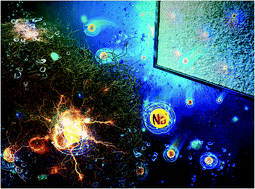
J. Mater. Chem. A, 2017,5, 11384-11395
https://doi.org/10.1039/C7TA90116J
One-electron intermediates of water oxidation & the role of solvation in their stability
The recent observations of one-electron intermediates of the water oxidation reaction, which localize charge to the surface, suggest that their stability is guided by solvation; in turn, this calls for an expansion of current theoretical calculations of their charge trapping capacity to include explicit solvent.
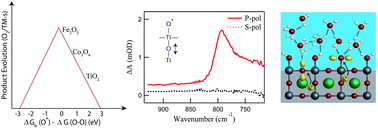
J. Mater. Chem. A, 2017,5, 11410-11417
https://doi.org/10.1039/C7TA02240A
Roadmap and roadblocks for the band gap tunability of metal halide perovskites
Solar cells based on metal-halide perovskite semiconductors inspire high hopes for efficient low-cost solar energy conversion technology. We here reflect on recent progress and potential limitations of the band gap tunability of these compound semiconductors.
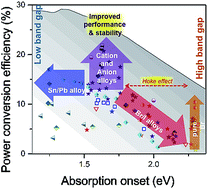
J. Mater. Chem. A, 2017,5, 11401-11409
https://doi.org/10.1039/C7TA00404D
Poly(3-hexylthiophene) (P3HT): fruit fly or outlier in organic solar cell research?
Regioregular poly(3-hexylthiophene) (P3HT) is used as a model polymer for research in organic solar cells.
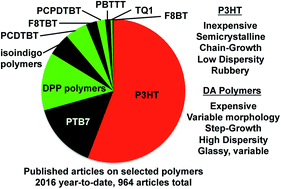
J. Mater. Chem. A, 2017,5, 11396-11400
https://doi.org/10.1039/C6TA08317J
Materials chemistry approaches to the control of the optical features of perovskite solar cells
This work presents a comprehensive revision of the different options developed under the materials chemistry umbrella to control the optical properties of ABX3 solar cells and to endow them with additional functionalities.
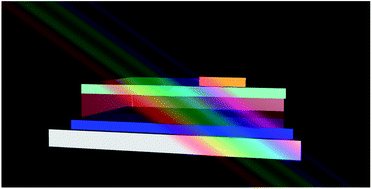
J. Mater. Chem. A, 2017,5, 20561-20578
https://doi.org/10.1039/C7TA05666D
Recent efficient strategies for improving the moisture stability of perovskite solar cells
Current popular and efficient strategies to improve the long-term stability regarding protection against moisture in the field of PSCs.
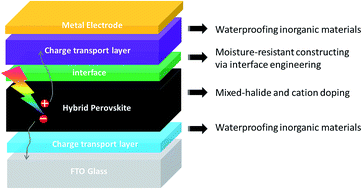
J. Mater. Chem. A, 2017,5, 15447-15459
https://doi.org/10.1039/C7TA01325F
Direct C–H arylation: a “Greener” approach towards facile synthesis of organic semiconducting molecules and polymers
Direct C–H arylation enables “greener” synthesis of π-conjugated small molecules and polymers without tedious preactivation of C–H bonds.
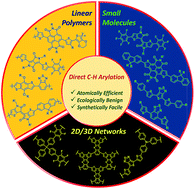
J. Mater. Chem. A, 2017,5, 11550-11571
https://doi.org/10.1039/C7TA00617A
Towards enabling stable lead halide perovskite solar cells; interplay between structural, environmental, and thermal stability
Rational design approaches bring perovskite solar cells closer to meeting industrial stability criteria.
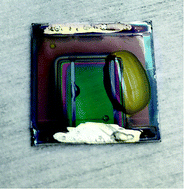
J. Mater. Chem. A, 2017,5, 11483-11500
https://doi.org/10.1039/C7TA00434F
A critical review on tin halide perovskite solar cells
In this work, we reviewed the evolution of the performance of photovoltaic devices (single junction and tandems) using Sn-containing perovskites.

J. Mater. Chem. A, 2017,5, 11518-11549
https://doi.org/10.1039/C7TA00929A
Mixed cation hybrid lead halide perovskites with enhanced performance and stability
The mixed cation lead halide perovskite solar cells exhibited improved performance and enhanced stabilities.
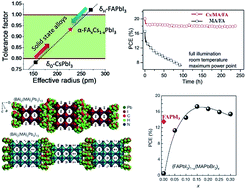
J. Mater. Chem. A, 2017,5, 11450-11461
https://doi.org/10.1039/C7TA00042A
Recent advances in organic ternary solar cells
In this review, we first present general principles of ternary solar cells, followed by a comprehensive review of recent advances in ternary systems including the D1:D2:A system and D:A1:A2 system. In the end, we summarize the fundamentals and provide a prospect on organic ternary solar cells.
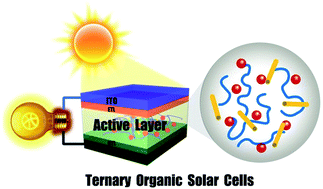
J. Mater. Chem. A, 2017,5, 11501-11517
https://doi.org/10.1039/C7TA00887B
Synthesis, structure, and optoelectronic properties of II–IV–V2 materials
II–IV–V2 materials offer the promise of enhanced functionality in optoelectronic devices due to their rich ternary chemistry.
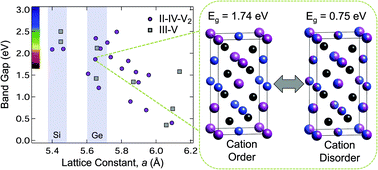
J. Mater. Chem. A, 2017,5, 11418-11435
https://doi.org/10.1039/C7TA00406K
Recent advances in perovskite solar cells: efficiency, stability and lead-free perovskite
In this review, we first highlighted recent progress in high-performance perovskite solar cells (PVSCs) with a discussion of the fabrication methods and PVSCs-based tandem solar cells. Furthermore, the stability issue of PVSCs and strategies to improve material and device stability have been discussed, and finally, a summary of the recent progress in lead-free perovskites has been presented.
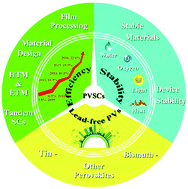
J. Mater. Chem. A, 2017,5, 11462-11482
https://doi.org/10.1039/C7TA00366H
Low-toxic metal halide perovskites: opportunities and future challenges
Over the past few years, lead halide perovskites have emerged as a class of dominant semiconductor materials in the photovoltaic (PV) field with an unprecedented sharp enhancement of power conversion efficiencies (PCEs) up to 22.1%, as well as in other promising optoelectronic applications due to their extraordinary and unique properties.

J. Mater. Chem. A, 2017,5, 11436-11449
https://doi.org/10.1039/C7TA00269F
Bioinspired, high-stability, nonaqueous redox flow battery electrolytes
A promising nonaqueous redox flow battery electrolyte has been developed by leveraging natural selection to elucidate stable, redox-active molecules.
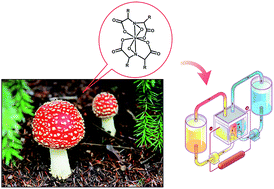
J. Mater. Chem. A, 2017,5, 11586-11591
https://doi.org/10.1039/C7TA00365J
Enhanced electrocatalytic performance of palladium nanoparticles with high energy surfaces in formic acid oxidation
Direct formic acid fuel cells hold great potential for utilizing formic acid as an energy source via formic acid oxidation (FAO).
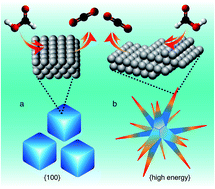
J. Mater. Chem. A, 2017,5, 11582-11585
https://doi.org/10.1039/C7TA00902J
Redox-active organic–inorganic hybrid polyoxometalate micelles
A redox-active hybrid organic–inorganic polyoxometalate surfactant showed solvent-dependent self-assembly to form nano-scale architectures.
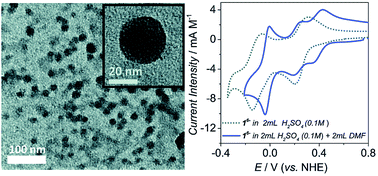
J. Mater. Chem. A, 2017,5, 11577-11581
https://doi.org/10.1039/C7TA00408G
Chemically designed CeO2 nanoboxes boost the catalytic activity of Pt nanoparticles toward electro-oxidation of formic acid
CeO2 nanoboxes designed by controlling various chemical parameters enhance both the efficiency and stability of Pt nanoparticles towards the electrochemical oxidation of formic acid.
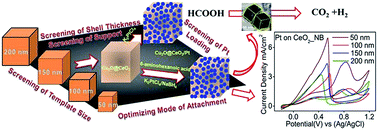
J. Mater. Chem. A, 2017,5, 11572-11576
https://doi.org/10.1039/C6TA06339J
High-throughput screening of bimetallic catalysts enabled by machine learning
We present a holistic machine-learning framework for rapid screening of bimetallic catalysts with the aid of the descriptor-based kinetic analysis.
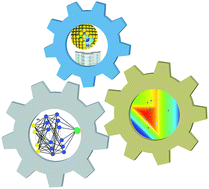
J. Mater. Chem. A, 2017,5, 24131-24138
https://doi.org/10.1039/C7TA01812F
High capacity potassium-ion battery anodes based on black phosphorus
Potassium electrochemistry of a battery anode based on black phosphorus is reported. The phosphorus component operates via electrochemical alloying with potassium and has a theoretical capacity of 843 mA h g−1.
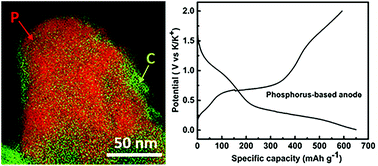
J. Mater. Chem. A, 2017,5, 23506-23512
https://doi.org/10.1039/C7TA02483E
Rh-promoted mixed oxides for “low-temperature” methane partial oxidation in the absence of gaseous oxidants
Rh promoted mixed-oxides show a syngas productivity of 7.9 mmol g−1 at 600 °C in the absence of gaseous oxidants.
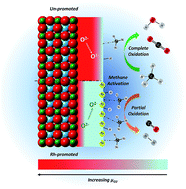
J. Mater. Chem. A, 2017,5, 11930-11939
https://doi.org/10.1039/C7TA01398A
On the energetics of bound charge-transfer states in organic photovoltaics
Using temperature-dependent optical-control spectroscopy, we show that the binding energy of localised charge-transfer state is about 90 meV in a range of organic photovoltaic systems.
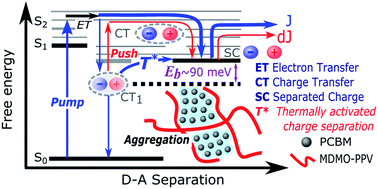
J. Mater. Chem. A, 2017,5, 11949-11959
https://doi.org/10.1039/C7TA01190C
Galvanic reactions at the single-nanoparticle level: tuning between mechanistic extremes
In situ spectroscopy reveals dramatic tunability of the nature and kinetics of galvanic exchange-based synthesis of porous bimetallic nanostructures.
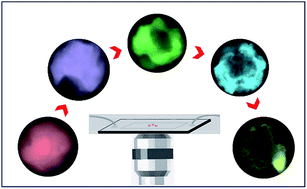
J. Mater. Chem. A, 2017,5, 11940-11948
https://doi.org/10.1039/C7TA03302H
Porphyrin-based metal-organic frameworks for solar fuel synthesis photocatalysis: band gap tuning via iron substitutions
Computer simulations show that iron substitution at the octahedral centres of porphyrin-based metal–organic frameworks leads to optimal band structures for photocatalysis.
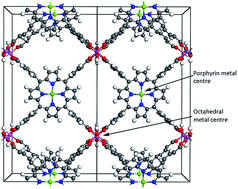
J. Mater. Chem. A, 2017,5, 11894-11904
https://doi.org/10.1039/C7TA01278K
Phosphate tuned copper electrodeposition and promoted formic acid selectivity for carbon dioxide reduction
Cu electrodeposition was tuned by phosphate anions and the so-prepared electrodes exhibited outstanding selectivity for CO2 conversion to HCOOH.
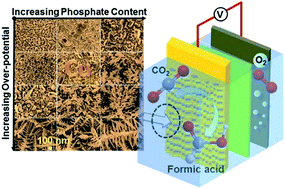
J. Mater. Chem. A, 2017,5, 11905-11916
https://doi.org/10.1039/C7TA01871A
Probing the surface reactivity of nanocrystals by the catalytic degradation of organic dyes: the effect of size, surface chemistry and composition
We herein present a comprehensive study on how the catalytic performance and reusability of Au nanocrystals (NCs) are affected by systematic variations of crystal size, surface coating and composition.
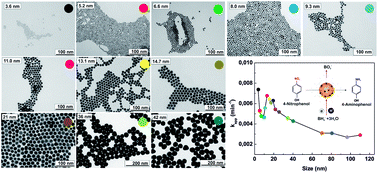
J. Mater. Chem. A, 2017,5, 11917-11929
https://doi.org/10.1039/C7TA01328K
Constructing multifunctional MOF@rGO hydro-/aerogels by the self-assembly process for customized water remediation
We first time report a general strategy for one-step fabrication of a ZIF-8 MOF/RGO hydrogel, with the synergistic effects of chemical reduction and cross-linking by metal ions.
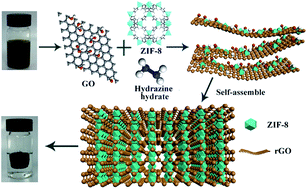
J. Mater. Chem. A, 2017,5, 11873-11881
https://doi.org/10.1039/C7TA01343D
Functionalization of transparent conductive oxide electrode for TiO2-free perovskite solar cells
Fullerene hydrophobic SAM acts as ETL in PSCs getting big crystals and highly efficient devices.
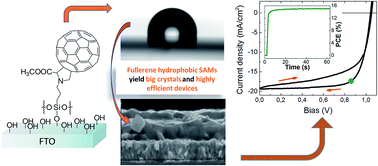
J. Mater. Chem. A, 2017,5, 11882-11893
https://doi.org/10.1039/C7TA02405C
Aminated poly(vinyl chloride) solid state adsorbents with hydrophobic function for post-combustion CO2 capture
The paper presents a novel sustainable route for the production of carbon capture materials from general plastic waste.
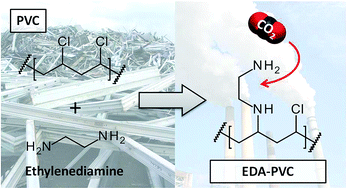
J. Mater. Chem. A, 2017,5, 11864-11872
https://doi.org/10.1039/C7TA00389G
How to make persistent micelle templates in 24 hours and know it using X-ray scattering
The controlled fabrication of nanoscale materials can enable new behaviors and properties as well as improved performance.
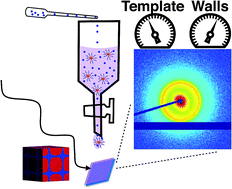
J. Mater. Chem. A, 2017,5, 11840-11853
https://doi.org/10.1039/C7TA01034F
Systematic variation of the optical bandgap in titanium based isoreticular metal–organic frameworks for photocatalytic reduction of CO2 under blue light
N-alkyl substitution–from methyl to heptyl–in isoreticular MIL-125-NH2 MOFs induces a stepwise decrease in the optical bandgap, while increasing CO2 photoreduction efficiencies.
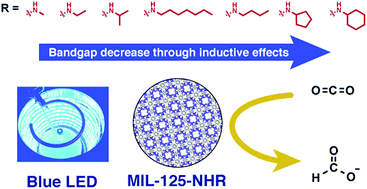
J. Mater. Chem. A, 2017,5, 11854-11863
https://doi.org/10.1039/C7TA00437K
High energy density supercapacitors composed of nickel cobalt oxide nanosheets on nanoporous carbon nanoarchitectures
This work demonstrates a simple approach to the development of NiCo2O4 and nanoporous carbon composites for high-performance supercapacitor application.
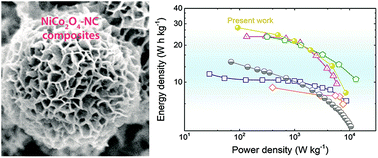
J. Mater. Chem. A, 2017,5, 11834-11839
https://doi.org/10.1039/C7TA01362K
Computational design of cobalt-free mixed proton–electron conductors for solid oxide electrochemical cells
Proton-conducting solid-oxide electrolyzer and fuel cells (PC-SOECs/FCs) with new oxide-based electrodes represent viable, green technologies for H2 production and conversion.
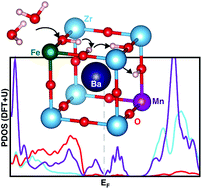
J. Mater. Chem. A, 2017,5, 11825-11833
https://doi.org/10.1039/C7TA00338B
A pomegranate-structured sulfur cathode material with triple confinement of lithium polysulfides for high-performance lithium–sulfur batteries
A pomegranate-structured sulfur cathode material, with a dendrimer/graphene-oxide composite wrapping sulfur-infiltrated ferrocene-functionalized mesoporous carbon, shows high electrochemical performance.

J. Mater. Chem. A, 2017,5, 11788-11793
https://doi.org/10.1039/C7TA00035A
Effects of proton irradiation on structural and electrochemical charge storage properties of TiO2 nanotube electrodes for lithium-ion batteries
The effects of proton irradiation on nanostructured metal oxides have been investigated.

J. Mater. Chem. A, 2017,5, 11815-11824
https://doi.org/10.1039/C7TA01026E
Dead lithium: mass transport effects on voltage, capacity, and failure of lithium metal anodes
A mechanistic analysis of voltage shape changes in lithium metal anodes explains how dead lithium causes capacity fade and failure.
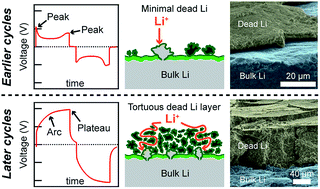
J. Mater. Chem. A, 2017,5, 11671-11681
https://doi.org/10.1039/C7TA00371D
Mechanism of zinc oxide retardation in alkali-activated materials: an in situ X-ray pair distribution function investigation
Using in situ X-ray PDF, we elucidate the crucial role of calcium in the retardation mechanism of zinc oxide.
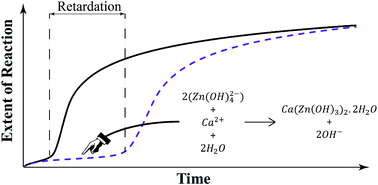
J. Mater. Chem. A, 2017,5, 11794-11804
https://doi.org/10.1039/C7TA00412E
Low-temperature vapour phase polymerized polypyrrole nanobrushes for supercapacitors
A low temperature modified vapor phase polymerization affords high-aspect ratio nanofibers of polypyrrole, which conformally coat fibrous substrates.
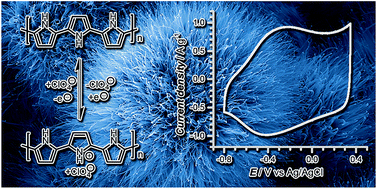
J. Mater. Chem. A, 2017,5, 11772-11780
https://doi.org/10.1039/C7TA00369B
Gold nanoparticles-supported histamine-grafted monolithic capillaries as efficient microreactors for flow-through reduction of nitro-containing compounds
Hybrid microreactors consisting in 5, 20, 100 nm-sized gold nanoparticles immobilized on histamine grafted polymeric monoliths were successfully prepared, finely characterized and further applied to the catalytic reduction of nitro-derivatives.

J. Mater. Chem. A, 2017,5, 11805-11814
https://doi.org/10.1039/C7TA00410A
Microwave-assisted synthesis of a nanoamorphous (Ni0.8,Fe0.2) oxide oxygen-evolving electrocatalyst containing only “fast” sites
Nickel–iron oxyhydroxides (Ni1−xFexOOH) are non-precious metal electrocatalysts for the oxygen evolution reaction (OER) that have high efficiency in alkaline media.

J. Mater. Chem. A, 2017,5, 11661-11670
https://doi.org/10.1039/C7TA00151G
Harnessing molecular photon upconversion at sub-solar irradiance using dual sensitized self-assembled trilayers
Self-assembled trilayers on metal oxide surfaces are used to increase absorption cross section and photocurrent generation efficiency via triplet–triplet annihilation.
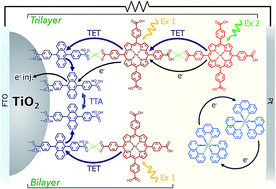
J. Mater. Chem. A, 2017,5, 11652-11660
https://doi.org/10.1039/C7TA00317J
A binary metal organic framework derived hierarchical hollow Ni3S2/Co9S8/N-doped carbon composite with superior sodium storage performance
The carbonization and sulfurization of a hierarchical hollow MOF leads to anode materials with exceptional performance in Na+ batteries with high cycle stability and rate performance.
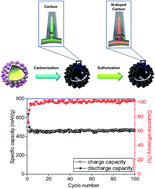
J. Mater. Chem. A, 2017,5, 11781-11787
https://doi.org/10.1039/C7TA00201G
Hybrid Na–air flow batteries using an acidic catholyte: effect of the catholyte pH on the cell performance
Hybrid-type Na–air batteries using a flow-through configuration and an acidic catholyte are investigated to enhance the battery performance.
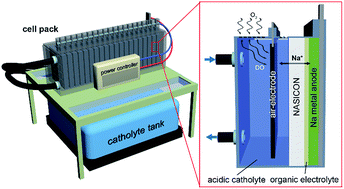
J. Mater. Chem. A, 2017,5, 11592-11600
https://doi.org/10.1039/C7TA00400A
Elucidating the alkaline oxygen evolution reaction mechanism on platinum
Understanding the interplay between surface chemistry, electronic structure, and reaction mechanism of the catalyst at the electrified solid/liquid interface will enable the design of more efficient materials systems for sustainable energy production.

J. Mater. Chem. A, 2017,5, 11634-11643
https://doi.org/10.1039/C7TA00409E
Computational investigation of CO2 electroreduction on tin oxide and predictions of Ti, V, Nb and Zr dopants for improved catalysis
Computational chemistry elucidates surfaces structures under CO2 reduction operating conditions and predicts new dopants for Sn to enhance electrocatalysis.
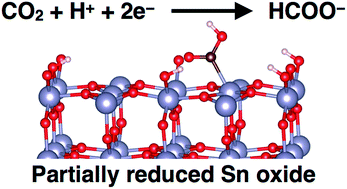
J. Mater. Chem. A, 2017,5, 11756-11763
https://doi.org/10.1039/C7TA00405B
Fabrication and optical characterization of polystyrene opal templates for the synthesis of scalable, nanoporous (photo)electrocatalytic materials by electrodeposition
Using polystyrene opal templates, we employ electrodeposition for the synthesis of highly homogeneous, large scale nanoporous (photo)electrocatalytic materials for artificial photosynthesis.
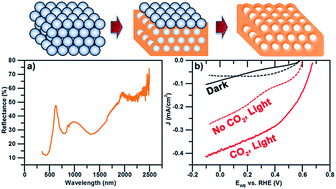
J. Mater. Chem. A, 2017,5, 11601-11614
https://doi.org/10.1039/C7TA00512A
High-performance LiTi2(PO4)3 anodes for high-areal-capacity flexible aqueous lithium-ion batteries
Efficient high-areal-capacity flexible aqueous lithium-ion batteries based on nitrogen-doped carbon-coated LiTi2(PO4)3.
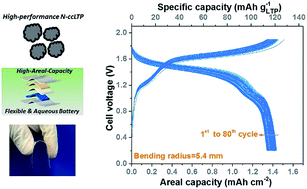
J. Mater. Chem. A, 2017,5, 11764-11771
https://doi.org/10.1039/C7TA00482F
High efficiency ternary organic solar cell with morphology-compatible polymers
The short circuit current density and fill factor are improved in ternary organic solar cell due to the high morphology compatibility.
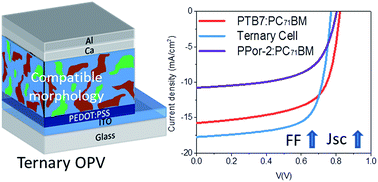
J. Mater. Chem. A, 2017,5, 11739-11745
https://doi.org/10.1039/C7TA00292K
Zinc-diffused silver indium selenide quantum dot sensitized solar cells with enhanced photoconversion efficiency
The photoconversion efficiency of AgInSe2 quantum dot sensitized solar cells was enhanced to 3.57% by Zn2+ alloying and inorganic passivation.
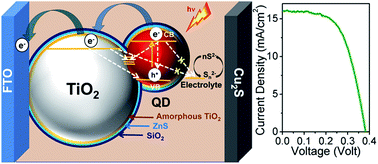
J. Mater. Chem. A, 2017,5, 11746-11755
https://doi.org/10.1039/C7TA00268H
Design and synthesis of porous ZnTiO3/TiO2 nanocages with heterojunctions for enhanced photocatalytic H2 production
Unique mesoporous ZnTiO3/TiO2 hollow polyhedra with selectively located Pt nanoparticles have been designed and constructed for photocatalytic hydrogen production.
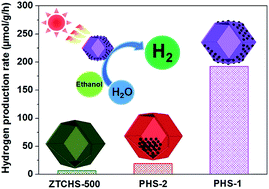
J. Mater. Chem. A, 2017,5, 11615-11622
https://doi.org/10.1039/C7TA00148G
Applying direct heteroarylation synthesis to evaluate organic dyes as the core component in PDI-based molecular materials for fullerene-free organic solar cells
A streamlined synthetic approach to easily access complex pi-conjugated molecular materials.
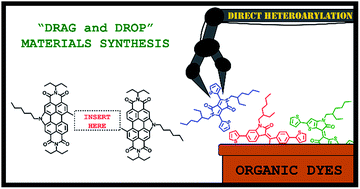
J. Mater. Chem. A, 2017,5, 11623-11633
https://doi.org/10.1039/C7TA00318H
Impact of synthetic routes on the structural and physical properties of butyl-1,4-diammonium lead iodide semiconductors
We report the significant role of synthetic routes and the importance of solvents in the synthesis of organic–inorganic lead iodide materials.

J. Mater. Chem. A, 2017,5, 11730-11738
https://doi.org/10.1039/C6TA10123B
Supports matter: unraveling the role of charge transfer in the plasmonic catalytic activity of silver nanoparticles
This paper unravels the role played by charge transfer to and from Ag nanoparticles in their plasmonic catalytic activities.
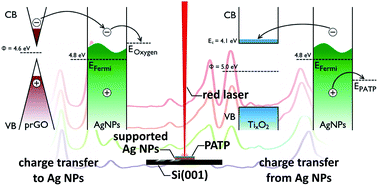
J. Mater. Chem. A, 2017,5, 11720-11729
https://doi.org/10.1039/C6TA10122D
Solar-driven Z-scheme water splitting using tantalum/nitrogen co-doped rutile titania nanorod as an oxygen evolution photocatalyst
Tantalum and nitrogen co-doped rutile TiO2 nanorods were developed as a visible-light-active water oxidation photocatalyst for solar-driven Z-scheme water splitting.
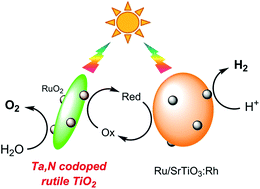
J. Mater. Chem. A, 2017,5, 11710-11719
https://doi.org/10.1039/C6TA10541F
Mechanistic insights into the formation of porous carbons from gelatin
Iron salts can change the structure and viscoelastic properties of the gelatin biopolymer and drive the formation of foams.
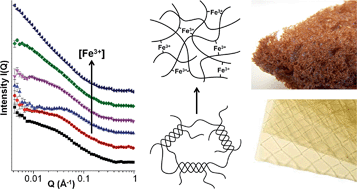
J. Mater. Chem. A, 2017,5, 11644-11651
https://doi.org/10.1039/C6TA10517C
Distinct nanoscale reaction pathways in a sulfide material for sodium and lithium batteries
Copper sulfide is found to exhibit excellent cycle life in Na-ion batteries, and multiscale in situ techniques (TEM and X-ray diffraction) are used to reveal unique aspects of the electrochemical reaction of sodium with this material.
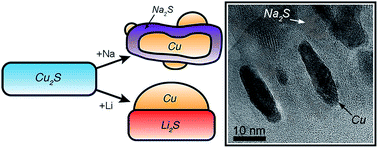
J. Mater. Chem. A, 2017,5, 11701-11709
https://doi.org/10.1039/C6TA09195D
Low cost and renewable sulfur-polymers by inverse vulcanisation, and their potential for mercury capture
Stable polymers of up to 80 wt% elemental sulfur are formed from low cost industrial by-products, and renewable crosslinkers.
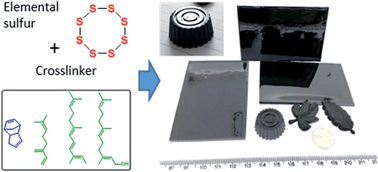
J. Mater. Chem. A, 2017,5, 11682-11692
https://doi.org/10.1039/C6TA09862B
High-photovoltage all-polymer solar cells based on a diketopyrrolopyrrole–isoindigo acceptor polymer
High-photovoltage all-PSCs with good stability were realized by using a new polymer acceptor based on diketopyrrolopyrrole–isoindigo.
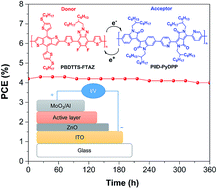
J. Mater. Chem. A, 2017,5, 11693-11700
https://doi.org/10.1039/C6TA09379E
About this collection
Journal of Materials Chemistry A is proud to present this themed issue highlighting 2017’s rising stars of materials chemistry research. This issue gathers the very best work from materials chemists in the early stages of their independent career.
Each contributor was recommended by experts in their fields as carrying out work with the potential to influence future directions in materials chemistry. Congratulations to all of those who feature on their important work so far in the field of materials energy and sustainability.